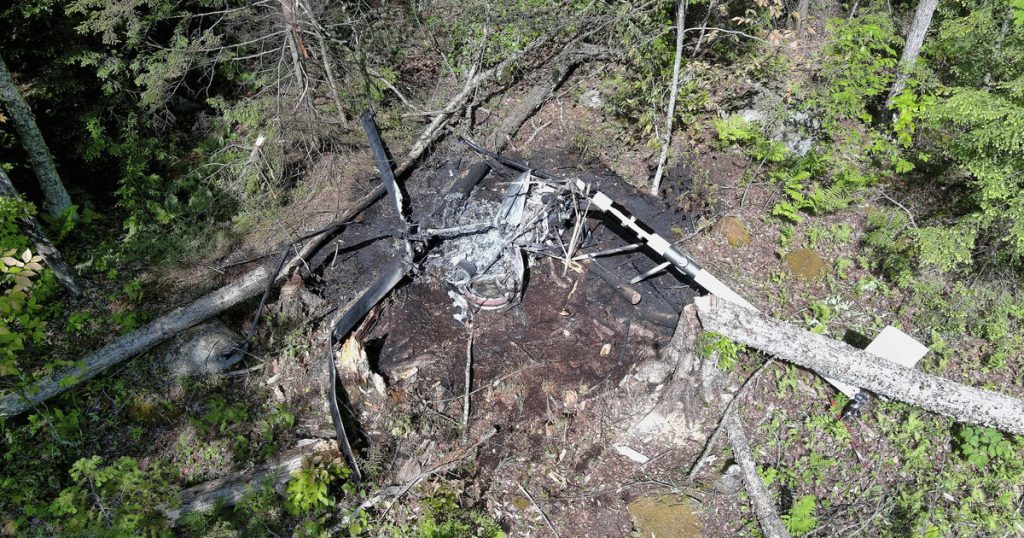A helicopter crash in central New Hampshire led to a rescue mission by bystanders who helped remove the pilot from the burning aircraft. The pilot, who was the only occupant of the helicopter, suffered serious but non-life-threatening injuries and was taken to Dartmouth Hitchcock Medical Center for treatment. The incident occurred in Merrimack County, about 30 miles northwest of Concord, and caused a fire that spread to the surrounding woods. The initial investigation suggested that the pilot lost control of the helicopter near a landing site, resulting in the crash into the property.
The National Transportation Safety Board and the Federal Aviation Administration are leading the investigation into the crash, and the wreckage of the Hughes TH-55 helicopter will be moved to an offsite facility for further examination. Authorities are asking anyone who witnessed the crash to contact the Danbury Police Department to provide additional information. The TH-55 Osage helicopter was originally used as a training aircraft by the military, with its first flight taking place in 1956. Despite its military origins, many TH-55 helicopters have been repurposed for civilian use over the years.
The pilot of the helicopter, who remains unidentified, was conscious, breathing, and alert when emergency responders arrived at the scene. Bystanders who witnessed the crash rushed to help the pilot, who was in a wooded area when the helicopter crashed into a residential property. Firefighters were able to contain the fire that resulted from the crash, preventing further damage to the surrounding area. Despite the seriousness of the crash, the pilot’s injuries were not life-threatening, suggesting that he may recover from the incident.
The Hughes TH-55 helicopter involved in the crash is a two-seater aircraft known for its military training use. The aircraft has a long history dating back to 1956 when it first took flight for military purposes. Over the years, many TH-55 helicopters have been transitioned to civilian use, serving various roles in different industries. The crash of this particular helicopter in central New Hampshire raised concerns about the safety of such aircraft and prompted investigators to look into the cause of the incident.
The incident in New Hampshire highlights the risks associated with helicopter operations and the importance of prompt response in emergency situations. Bystanders who witnessed the crash played a crucial role in assisting the pilot and preventing further damage to the property and surrounding area. The involvement of multiple agencies in the investigation underscores the need for thorough examination of the crash to identify any potential causes or contributing factors. Moving forward, the findings of the investigation could lead to changes in safety protocols or procedures to prevent similar accidents in the future.
As the investigation into the helicopter crash continues, authorities are urging anyone with information about the incident to come forward and provide details to assist in determining the cause of the crash. The cooperation of witnesses and the collaboration of multiple agencies involved in the investigation are essential to uncovering the sequence of events that led to the crash. By learning from this incident, steps can be taken to enhance safety measures and prevent future accidents involving helicopters. The pilot’s recovery from the crash serves as a testament to the quick response of bystanders and the effectiveness of emergency services in mitigating the impact of the incident.


